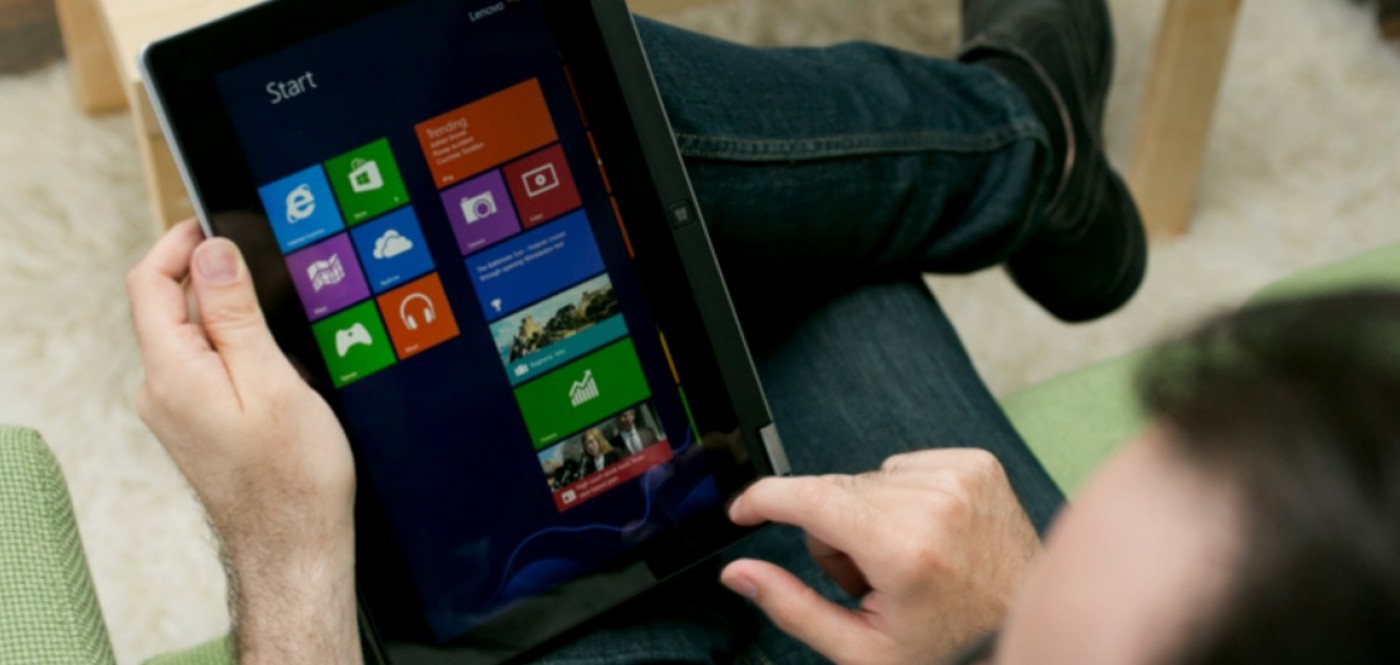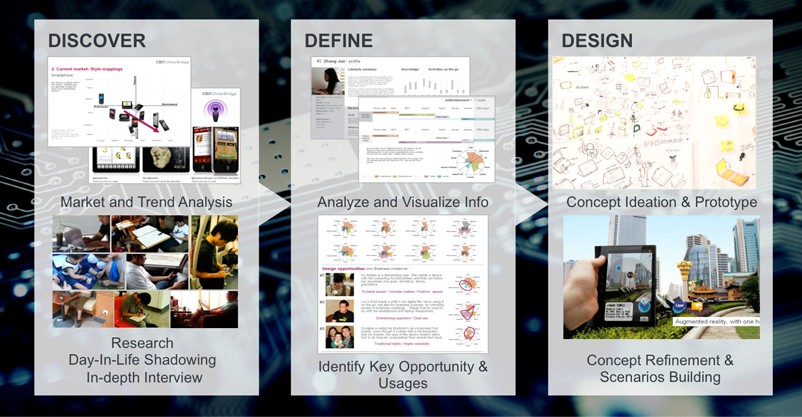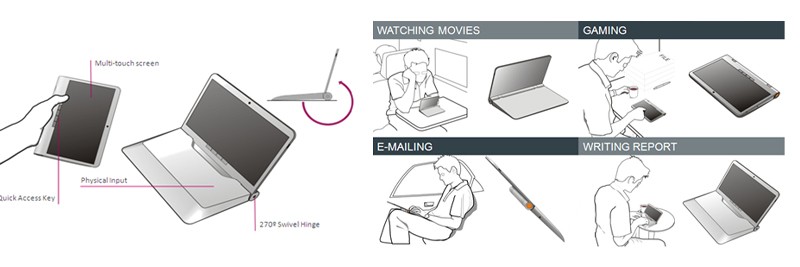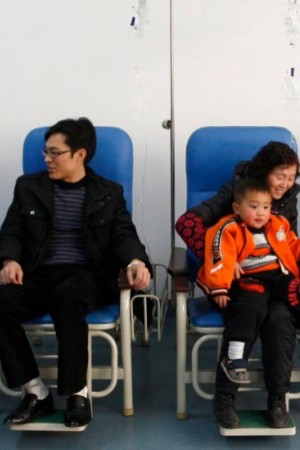Lenovo Yoga

Inspiring the “NEXT” Notebook Computer
BACKGROUND
With evolutions and revolutions in device usage happening all around us, it is well known that the experiences brought forth by tablets have forever changed the landscape. However, tablets do not fill every consumer's needs and often fall short in many areas.
Back in 2010, when facing the challenge of finding new opportunities in this sea of new usage habits, our team was approached with the aim to discover untapped and unmet needs to support and drive product innovation for Lenovo. The results of our discoveries, usage scenarios mapping and prototyping supported the case for Lenovo in defining their “next” and in developing a more relevant solution for users in the future.
At that time, the introduction of the Apple iPad brought a new computing experience to the world, capturing consumers’ hearts with ease. It also single-handedly opened a new market segment, which resulted in an influx of new tablet products from other PC manufacturers. Some analysts were already making bold claims that the end of notebook computers was rapidly approaching.
As a leading notebook provider to the world, we believe Lenovo had definitely felt the pressure from this market shift and made the decision to evolve. We can imagine that the Chinese idiom of “crisis brings opportunities” must have flashed into their leaders' minds at some point.
Lenovo invited CBi China Bridge to help them discover unsatisfied needs and define new computing concepts under the theme of “usage-on-the-go”.
Driven by rapid advancement in technology, new usage scenarios and value proposition would often emerge, transforming the very idea of “usage-on-the-go”. Although this usage scenario provided a vast space for innovation, it also presented a great challenge to us because it added the difficulty of defining future directions from a sea of unknown and unarticulated needs.
OBJECTIVE
We believe that leveraging qualitative research around today’s reality and foresight into the creative process is essential for envisioning concepts for future. However, insights around needs are not enough; the technology must be available to deliver against the needs.
Our Discover-Develop-Design process is an innovation framework for harvesting insights and developing meaningful future concepts.
PROCESS

DISCOVER consumer and market foresights
We first started by conducting desk research on surrounding topics and trends in the market, technology, lifestyles and popular culture, with the goal of forecasting future product evolution directions and to support defining who the pro-users of devices are.
We conducted ethnographic research to study digital device usage habits. By shadowing the interviewees we could observe how they used their digital gadgets in the context of their daily lives. Interviews were also made to understand how and why their lifestyle, product usage behaviors, needs and desires existed.
DEFINE opportunities to innovate
Our “Eureka!” moment came after being able to map and compare usage habits across 8 groups of pro-users, in which, two key insights emerged. Taking these insights into consideration, we defined two innovation opportunities:
- Device that focuses on creating a delightful usage experience for entertainment; and
- Device that is optimized for both work and play purposes.
DESIGN meaningful product solution
We proposed three concepts based on the two innovation opportunity definitions, of which, a concept codenamed “Business Crossover” was chosen.
“Business Crossover” is designed to suit the heavy users’ habit of using the same digital device for work and play purposes. The concept features an innovative hinge design that enables the multi-touch display to be angled in different positions for optimized usage experience in various scenarios.
In addition, understanding that e-mailing and report writing are frequently performed tasks for heavy users, physical inputs are also provided to enable effective data entry.
When we presented our “Business Crossover” concept to Lenovo’s team, they were excited about its solid and compelling business case. It also reminded them of their previous award-winning design concept, the “Yoga”. With the support of our insights and storyboards, Lenovo was inspired and determined to bring this innovation into the market.

RESULT
A thoughtful and ingenious design that is well-received in the world market!
After further refinements to the concept’s ergonomics, usability and user interface design, the “Business Crossover” concept was materialized as Lenovo Ideapad Yoga. It was first announced at the International CES in January 2012. It immediately won the “Best Ultrabook Award” at the show. Since its launch, Yoga has been well-received by computer experts and consumers.
IdeaPad Yoga won 11 awards from prominent industry publications, including PCMag.com, Popular Mechanics, LAPTOP and Tom’s Guide -- all highlighting its groundbreaking hybrid functionality, distinctive design and innovative engineering.

IMPACT
Insights for product development are also able to be channeled into marketing communications
The usage scenarios and storyboards that we crafted based on user insights vividly display the voice of consumer, while highlighting Yoga’s product appeal with high clarity. Besides succeeded in convincing decision makers to launch the concept to the market, the marketing team also realized its effectiveness for communicating with target consumers. As a result, the storyboards were applied to Yoga’s product promotion campaign on websites, display stages, and promotion pamphlets.
Lenovo’s testimony is a vote of confidence for our systematic approach in identifying the right insights and in developing innovative concepts.




